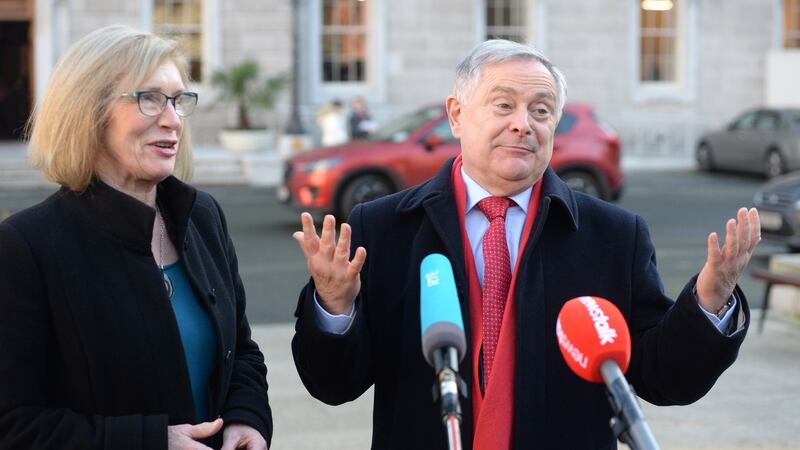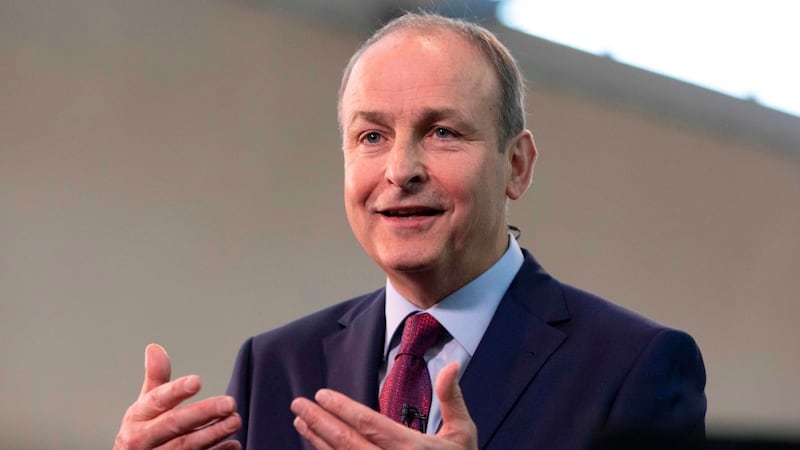The third of Ireland’s post-crash elections threw up the third shock result last weekend, demonstrating that unpredictability and volatility are the new normal in Irish politics. Flustered and flummoxed by the results, politicians – winners and losers – scrambled all week to absorb and adjust to the new reality. So did everyone else.
It wasn’t just the hardened politicians in the old firm parties of Fianna Fáil and Fine Gael that were struggling to come to terms with the results. Many Sinn Féin TDs, gathering in their droves at Leinster House on Thursday, had the honesty to look a bit shell-shocked by the whole thing.
But it is Sinn Féin that made the big headlines and represents the big change in this election. The party’s post-ceasefire growth – boosted by the financial crash – in polls and in seats had abated in recent years. Indeed, last year’s elections suggested that the party hadn’t just plateaued so much as gone into sharp decline.

This wasn’t a construction – as some party boosters have it now – of a hostile, pro-establishment media. It was feared and believed by Sinn Féin itself, as demonstrated by the fact it was still trimming its election tickets only days before the election was called. The surge the party now delights in was every bit as much a surprise to the party as it was to anyone else.
This week Mary Lou McDonald skilfully sought to capitalise on her success, embarking on a series of hastily arranged meetings with the other parties, designed as much to place Sinn Féin at the centre of the government formation narrative as anything else. Everyone knows the serious talking hasn’t started yet, and won’t for some time. But Sinn Féin was front and centre; there was no denying that.
Diversity is no doubt a wonderful thing. But it doesn't make putting a government together any easier
The stated position of McDonald and her party was to put together a coalition of the left, led by Sinn Féin, and excluding both Fianna Fáil and Fine Gael. But despite the allure of that prospect for many, it was always a long shot; maybe an impossible one. The numbers dictated that.
The difficulties in this process were illustrated when the Green Party’s meeting with the People Before Profit-Solidarity group turned out to be a meeting only with the three TDs in the People Before Profit element of the alliance. Solidarity, with its one TD, Mick Barry, would hold a separate meeting with Rise (also one TD, Paul Murphy).
Scattered Independents
And that was before you got to the Independents, 14 of whom would be needed to constitute the bare minimum required to elect a taoiseach and form a government.
Good luck with forging a consensus in a group that included rural Independents such as Noel Grealish and Denis Naughten; TDs such as the former Labour deputy Michael McNamara; singular figures such as Michael Lowry and Verona Murphy; and very left-leaning TDs such as Thomas Pringle and Joan Collins – and all points in between.
On the right/left spectrum of Irish politics – not always the best description, admittedly – the group of Independents contains people at either end.
They would also all have their own local demands; that is a fact of politics. Cork South-West Independent Michael Collins gave an indication of the sort of bargaining that would be required. He was willing – more than willing – to talk to anyone about government.
He would require (a) a ministry of fisheries, (b) a rural resettlement programme and (c) no downgrading of Bantry hospital.
Diversity is no doubt a wonderful thing. But it doesn’t make putting a government together any easier.
But the numbers were the real problem; they just weren’t there for Sinn Féin. Any hopes that an unlikely coalition could be scaffolded together began to evaporate when the outgoing Labour Party leader Brendan Howlin made clear on Wednesday that the new parliamentary party had agreed, on his recommendation, that they would not be prepared to serve in a new government.

This aspect of the announcement was overshadowed by Howlin’s resignation after a difficult four years as leader of the party, a job he took only after being more or less press-ganged into the role by his colleagues in 2016.
Howlin was probably one of the best ministers in the 2011-2016 government, but his party continues to pay a heavy price for its role in that turbulent administration. In 2020 terms that price was: only six TDs, and no part in government. Labour struggles on.
But if lots of people missed the significance of Labour crushing the hopes of a left-led government, the people who were counting heads did not.
The old firm
On Friday morning Sinn Féin’s housing spokesman, Eoin Ó Broin, acknowledged what anyone who could count had known for some time: the involvement of Fianna Fáil or Fine Gael would be needed to form a government. Needless to say, he was excoriated by Richard Boyd Barrett of People Before Profit for “throwing in the towel”. Boyd Barrett will never throw in the towel on the revolution.
Once the results of the election were settled and finalised – if not quite digested or understood – there were two significant developments this week that have had an impact on the possibility of forming a government.
The first was the realisation that the left-led government wouldn’t have the numbers. The second was Fianna Fáil’s decision to stick with Micheál Martin’s refusal to engage with Sinn Féin. There was a fair bit of grumbling about Martin among his TDs and the wider organisation in the aftermath of the result; everyone expected to do better, and many hoped the party would do a lot better. But there are no widespread objections to his stance on Sinn Féin.

That doesn’t mean that the party will rush headlong into the embrace of Fine Gael; but it does mean Martin is on secure ground when he rules out being Sinn Féin’s partners in government.
Sinn Féin realised immediately that Martin’s stance meant the party’s most realistic route to government was closed off; quickly McDonald accused the “old boys’ club” of a “sense of entitlement”.
The settling of the dust also makes clear that the Green Party and the Social Democrats are in powerful, perhaps pivotal, positions
Perhaps that is true; if so, she saw no irony in seeking to join it in government. But no matter. A new narrative was set: Sinn Féin was being excluded by the establishment, its mandate ignored, its voters disrespected. It is not an unfamiliar narrative to the party, nor one that has proved unprofitable for it.
Second election
Already the drum beats for another election began. “If we have to fight another election, okay, let’s have the election,” McDonald said. If there’s one thing that Fianna Fáil and Fine Gael are likely to agree on, it is that they should avoid that eventuality.
The settling of the dust also makes clear that the Green Party and the Social Democrats are in powerful, perhaps pivotal, positions, whether they realise it or not. Even if Fianna Fáil and Fine Gael cross the Rubicon to govern together, the numbers dictate that they will need additional votes in the Dáil to make a government possible.
One of the two (the Greens or Soc Dems) would be necessary; two preferable. Both made it clear this week that they would not be cheap dates. Once the talks are under way in a substantial way, that will become clearer – and uncomfortable for the old firm parties. Everyone focuses on Fianna Fáil and Fine Gael; but they will need others, too. It makes their job of agreeing and selling a new programme for government fiendishly difficult, and likely to take a long time. But if Fine Gael and Fianna Fáil want to be in government, and avoid an election, that is what the numbers require.
Sooner or later, everyone has to play the numbers game.









